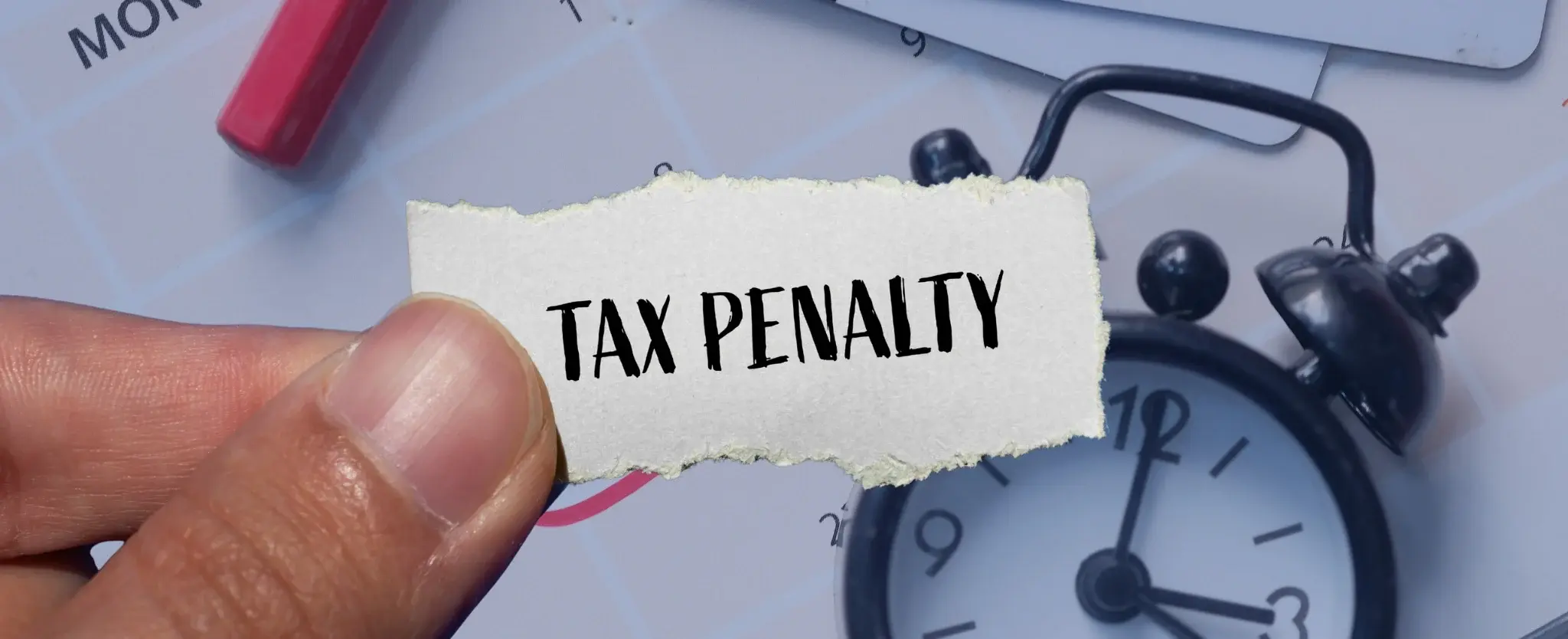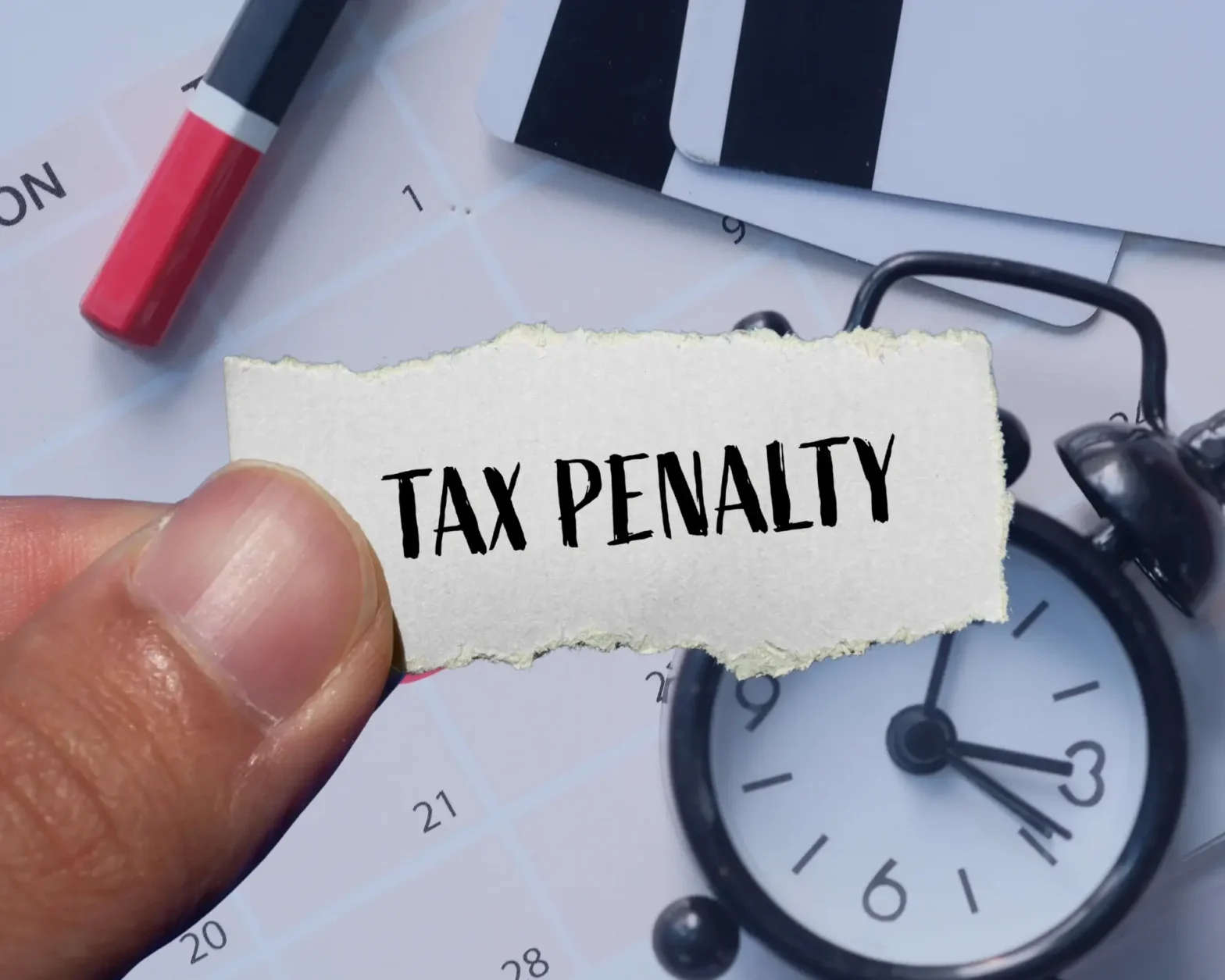
Learn how to beat 2025 estimated tax penalties instantly, today.
If you have made no estimated tax payments for the year, read on.
If your tax professional told you to pay $25,000 with each of the four instalments. However, you have not taken any action as of October 1. Then here is the bad news: you are in the penalty box. If you don’t do something special, you will have to pay a 7 percent non-deductible penalty on the underpaid amounts.
Your April 15, 2025, penalty will be $1,812.53 if you pay it on April 15, 2026, when you file your return. This amount is actually 7.25 percent of the original payment because the penalty is compounded daily.
In the 30 percent tax bracket, that penalty is about 10 percent compared to interest that’s deductible.
Can I resolve the issue by writing a check or making an electronic payment today that covers all the underpayments?
No. Remember, you are in the penalty box.
- A cash or check payment today does not make the previous underpayment of estimated tax penalties go away.
- But making a cash or check payment today that covers the prior estimates stops the growth of the penalties as of today.
So, the good news is that there’s one perfect way to eliminate the underpayment of estimated tax penalty today.
One perfect way to eliminate the underpayment of the estimated tax penalty
To make the underpayment of estimated tax penalty disappear, you need
- A retirement plan that allows the 60-day rollover
- Available money to repay the rollover
Say, you need to pay $100,000 in estimated taxes to avoid the penalty. If you failed to pay the April 15, June 15 and September 15 instalments totalling $75,000, then you are in the penalty box for each of those instalments, and you can’t catch up by paying them now.
The answer: You withdraw $100,000 from your IRA and have the custodian withhold and pay the IRS $100,000 in federal income tax withholding. Then, within 60 days, you repay the IRA $100,000 using funds from your investment account.
Here is what happened:
- You have no estimated tax penalty. You can treat the $100,000 of taxes withheld from your IRA as estimated tax payments paid at the rate of $25,000 on each of the due dates: April 15, June 15, September 15 and January 15.
- You did not increase your taxes or incur any penalties by taking out the $100,000 from the IRA, because you repaid it within 60 days under the rollover rules.
Other things to know about the one perfect way
Plans that are eligible for the 60-day rollover strategy include the following:
- Traditional IRA
- Roth IRA
- SEP IRA
- SIMPLE IRA
- 401(k)
- 403(b)
- 457(b)
For all the IRAs listed above, there is a one-year rule. The tax code limits you to one 60-day rollover for all your IRAs. With minor planning, that is not an obstacle.
For the 401(k), 403(b), and 457(b) plans, there is no one-year restriction.
The one perfect way works irrespective of age, provided you have (a) a rollover-eligible plan and (b) cash funds to repay the rollover.
RMDs- Another possibly perfect plan, but not for everyone
If you are age 73 or older, you must take your required minimum distribution (RMD) by year-end anyway. Electing to have federal taxes withheld from your RMD can simultaneously satisfy the withdrawal requirement and catch up on estimated tax requirements. With this method:
- You meet your annual RMD requirement.
- You might seamlessly cover your estimated tax obligations without separate estimated payments.
- You reduce the risk of penalties for late or insufficient estimated payments.
W-2 Bonus: A Bad Plan
Federal income tax withholding counts as estimated tax payments, spread equally across the four due dates-unless you can show when the withholding actually happened, in which case you can choose to treat it as paid on those specific dates.
On the surface, this sounds like an excellent idea for the “giving yourself a bonus and then paying your estimated taxes with the bonus” strategy. But it is a bad idea.
Say, you operate your business as an S corporation, and you are going to be $100,000 short on estimated tax payments, you pay yourself a $100,000 bonus today, and have the corporation withhold all of it as withheld wages.
You already know why this is bad. You saw the two bad words in the example ‘payroll taxes’ and they are bad for two reasons.
- Payroll taxes are expensive. Between you and the corporation, you could pay $15,300 in Medicare and Social Security taxes alone. That’s a lot more than the penalty for underpayment of estimated taxes.
- Payroll can cut into your 20 percent Section 199A deduction. Wages reduce the corporation’s qualified business income—that’s one of the base amounts on which the 20 per cent is based. If you lower the base, you likely lower your benefit.
FAQs
What happens if estimated tax payments are missed for 2025?
If no estimated tax payments are made, a taxpayer faces a 7% non-deductible penalty (which compounds daily) applied to each underpaid instalment.Is the 60-day rollover solution available to everyone?
Yes, as long as the plan allows rollovers and sufficient cash is available to restore the withdrawn amount within 60 days, there is no age restriction for this method.- Should a W-2 bonus be used to catch up?
No, covering underpayments by paying yourself a W-2 bonus and withholding tax is not recommended. It triggers payroll taxes and may reduce eligibility for the 20% Section 199A deduction for pass-through businesses.
BergerCPAFirst, with over 30+ years of experience, offers comprehensive tax preparation services for individuals and businesses nationwide. Our commitment is to provide personalized attention while ensuring compliance and maximizing tax benefits. If you have any questions or would like to schedule a consultation, please call (201) 587-9200 or send us an inquiry.

 Client Login
Client Login





